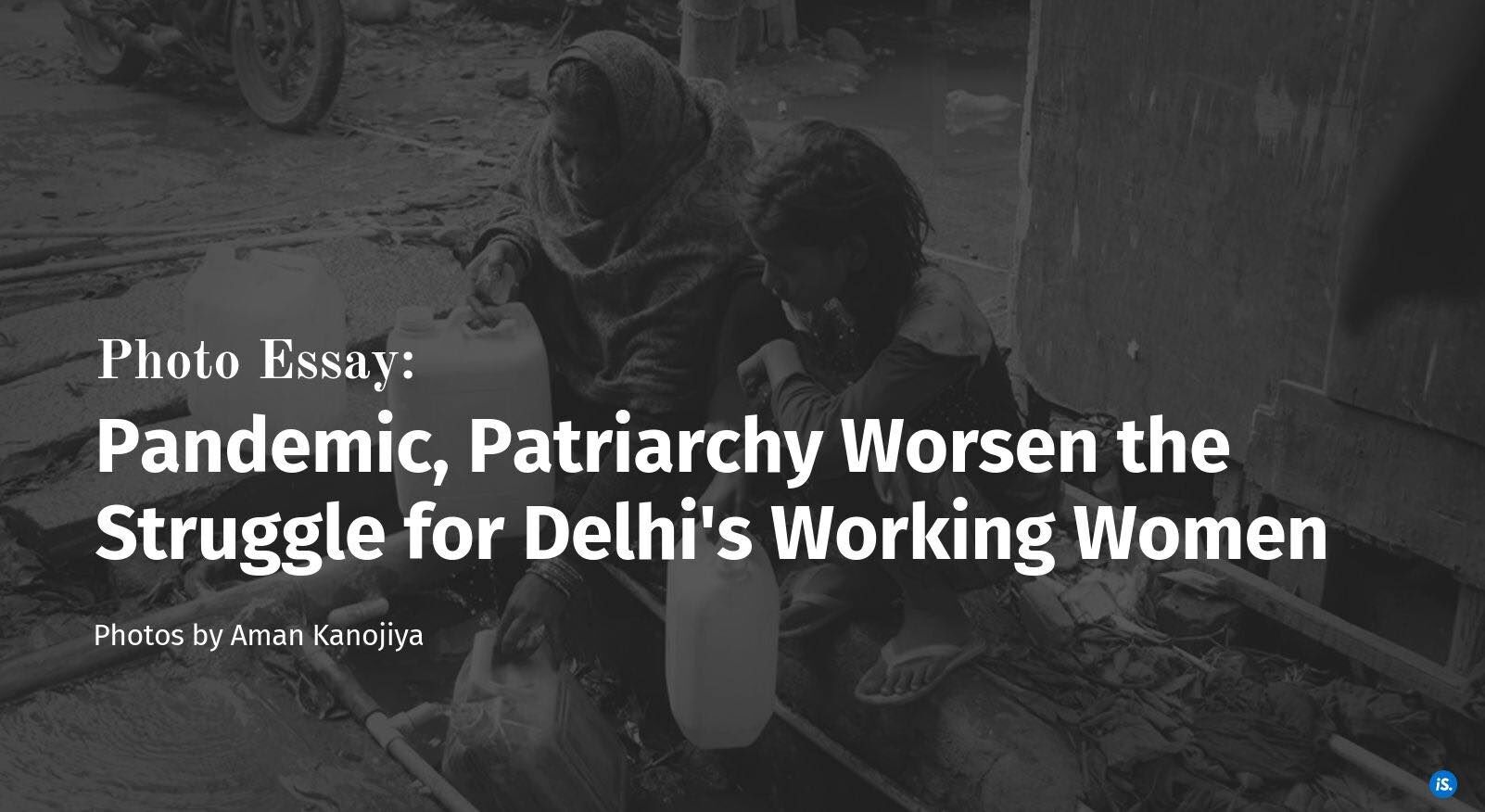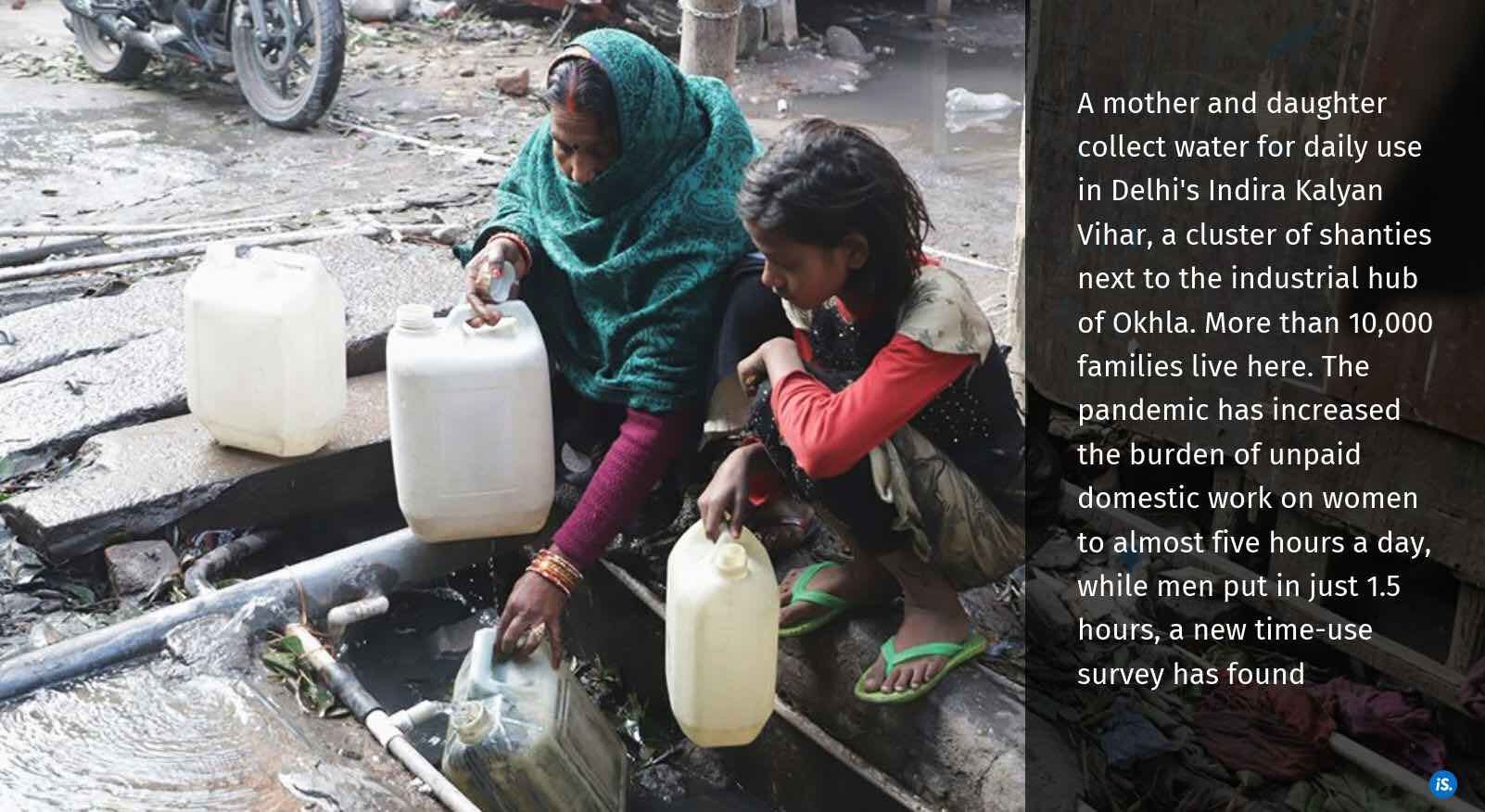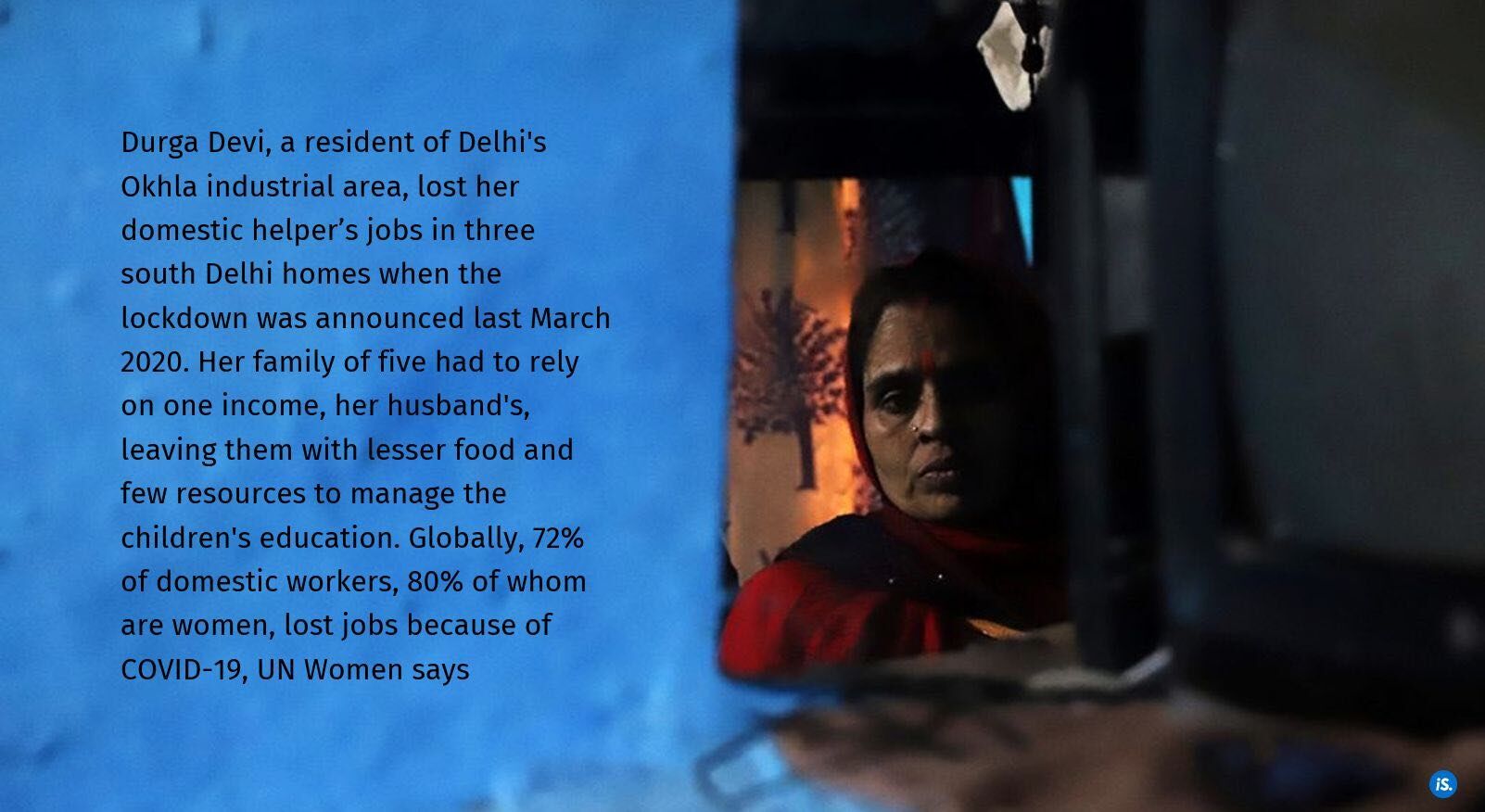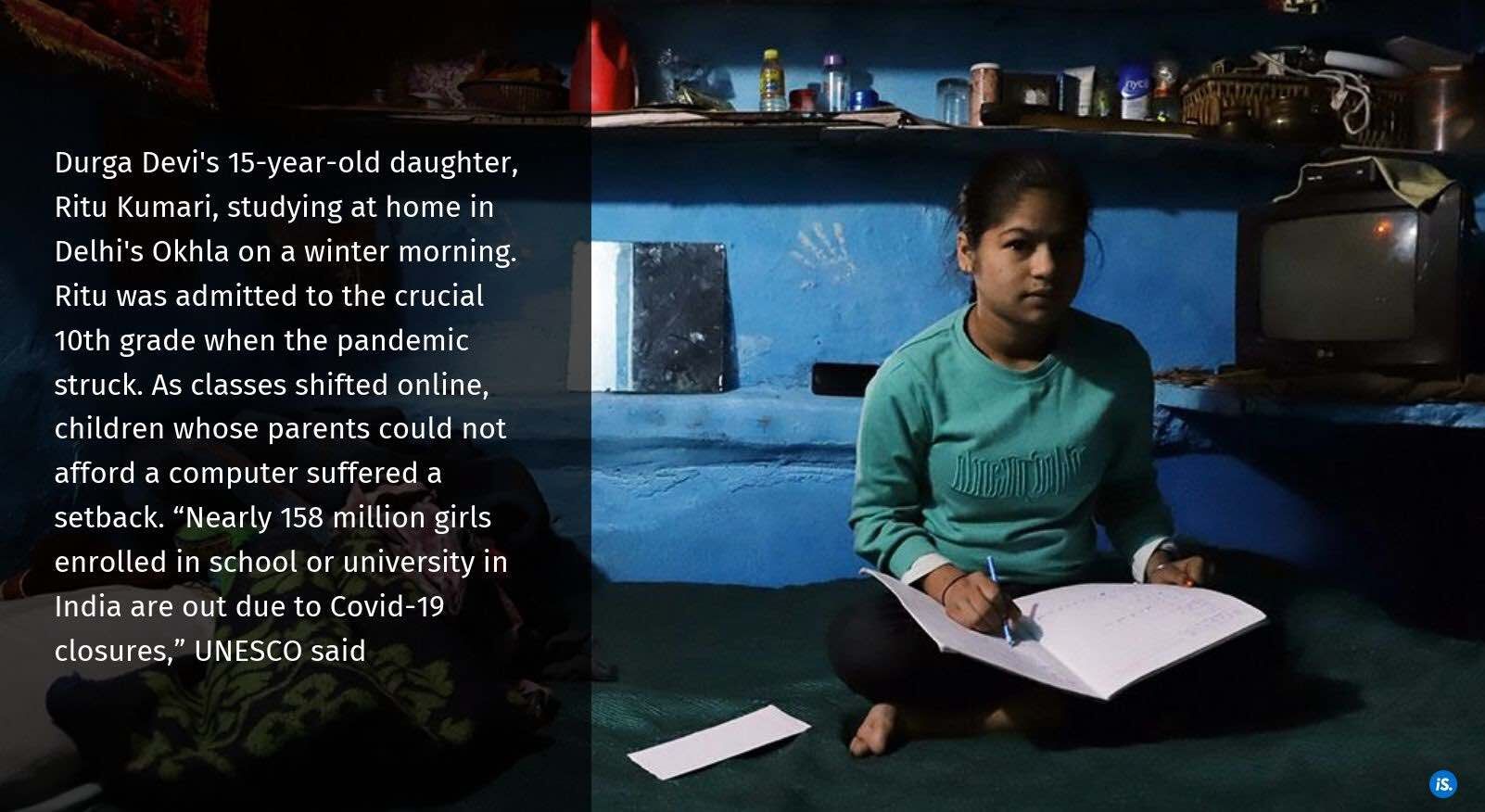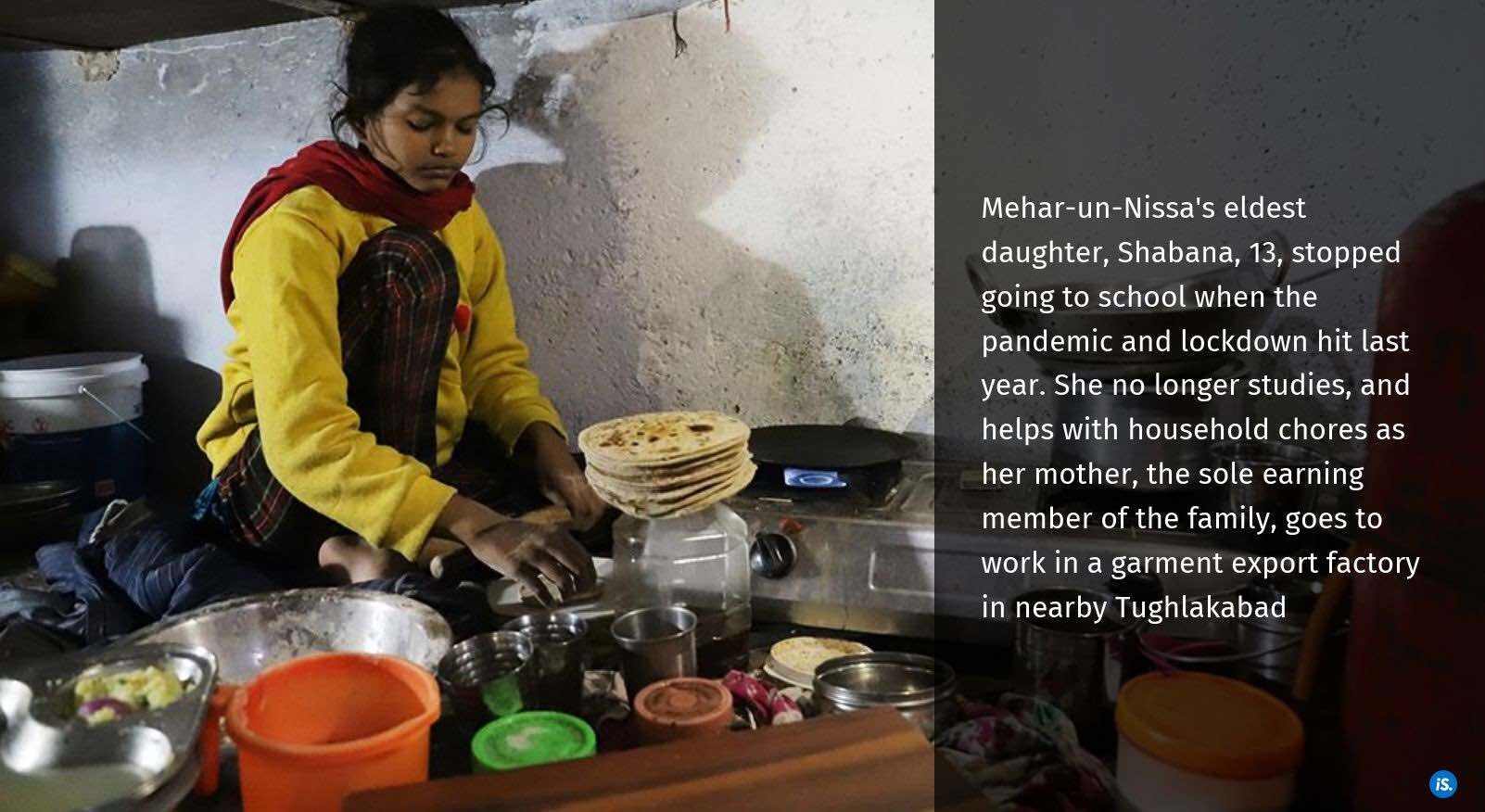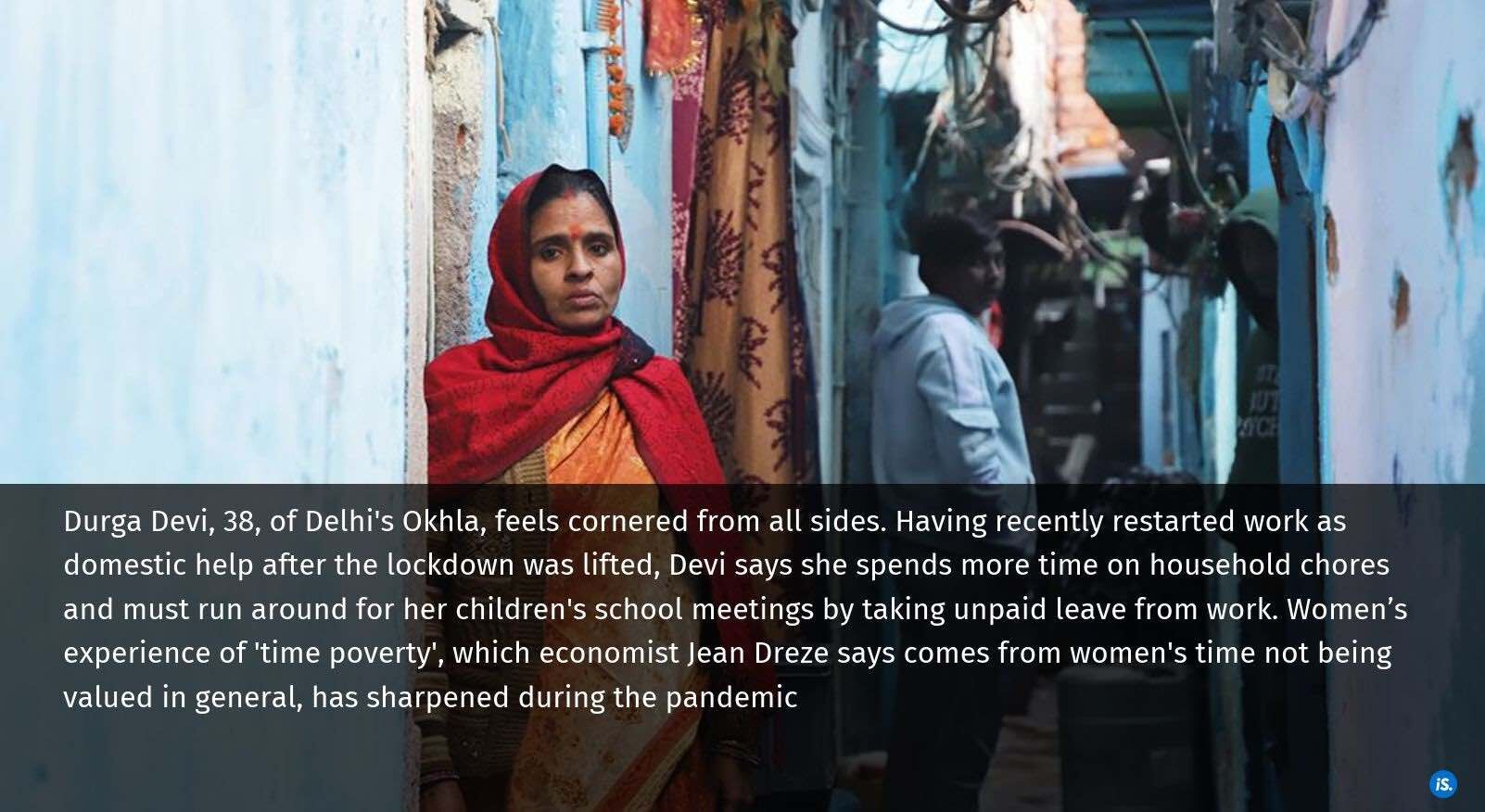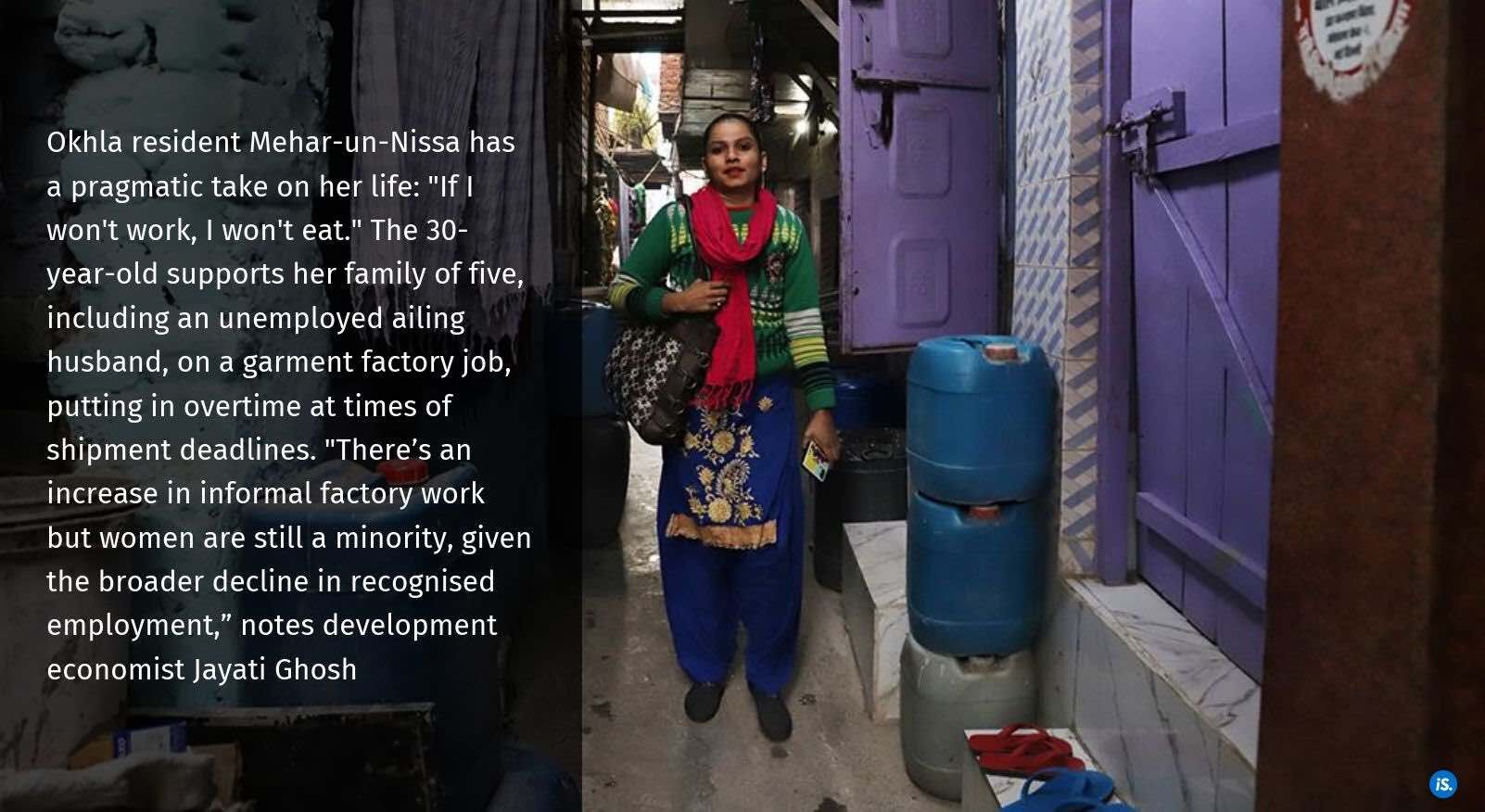From Delhi, A View Of Women's Work Hit By The Pandemic
Those in formal jobs faced salary cuts, while those in informal jobs lost several months' income and were forced to cut down on basics such as food and education for their children.
New Delhi: Even the value of scrap has gone down in these times. And scrap is more difficult to find these days too. Ask 29-year-old Lutfun Nisha, a rag-picker in north-west Delhi, where about a fifth of the national capital's population resides. "If I do not find garbage, I cannot sell anything to the scrap dealer. Before the lockdown, I used to sell it for Rs 35-40 per kg. Now, the rate has dropped to Rs 10 per kg," said Nisha. She lives with her parents and an eight-year-old son in a 90-square-foot hutment where the rent has doubled--from Rs 150 to Rs 300 a month since the pandemic started. "We could barely eat this year," she told IndiaSpend over the phone from her Delhi dwellings in early December 2020.
On some days, Nisha walks 6 km across garbage dumps and littered alleys to Rithala, an industrial area, to find saleable scrap, taking along her "mentally unstable" father as a token male figure for her safety. Her child stays behind with Nisha's mother. "I used to earn a couple of thousand rupees per month earlier and manage somehow," Nisha told IndiaSpend. "From half a kilo of rice [per person] a month, we are down to a quarter kilo now. During the lockdown, there was no work. We could barely eat one meal a day."
Nisha is but one among an estimated 740 million women in the informal economy, globally, whose incomes fell by 60% in the first month of the COVID-19 pandemic, according to a September 2020 report by UN Women.
India's capital and its most urban state (97.5% urban), Delhi, reported the lowest labour force participation rate (LFPR) at 33% and the fourth highest unemployment rate (23.3%) during the first three phases of the Unlock from May to August 2020, according to data from the Centre for Monitoring Indian Economy (CMIE). LFPR refers to the proportion of all working-age people in India who are either employed or looking for jobs. Unemployment rate is the proportion of people in the labour force who do not have a job. By gender, Delhi's female LFPR is 5.5% compared to the male LFPR of 57%, while female unemployment stands at 47% as against male unemployment of 21%, CMIE data show.
India's LFPR was 50.2% according to PLFS, 2018-19. The pandemic seems to have further pushed people out of work. Between May and August 2020, the LFPR came down to 40.2%, according to CMIE. Labour participation rates for females was 9.3% compared to 67.4% for males. (Urban female – 7.8, rural female – 10.1). Urban female unemployment rate stood at 21.9% compared to 11.7% for urban males.
It's well known globally and within India that women get rationed out of better jobs and out of all jobs when jobs become scarce. "In Delhi, there is an imbalance between aspirants seeking employment (both earlier residents and new migrants) and total job availability, made worse by the economic slowdown (and now of course the pandemic), so women are likely to be disproportionately the losers," said development economist Jayati Ghosh.
In this story, we examine the situation for women workers in the Indian capital--envisioned as a world class city--where employment rates (and attitudes) have been nearly static since 1981. While women's work participation has been long invisibilised, the pandemic hit Delhi's informal workers hard and many women lost jobs. Women in the formal sector also faced difficulties ranging from pay cuts to job losses. The crisis was compounded by an increased burden of unpaid domestic work, revealing broader fault-lines. "In case of Delhi, long commuting hours, work timings and safety issues restrict women's mobility and hinder their workforce participation," explained Sanghamitra Singh, senior manager, Population Foundation of India.
This is the third story in the new edition of our Women@Work series, which seeks to investigate the barriers to women's paid work. The first story explored existing data to analyse the lockdown's effect and how it has exacerbated existing challenges, and the second investigated how gig work has increased women's opportunities and incomes but leaves them vulnerable to the same challenges as the conventional economy -- including the gender pay gap and lack of social security.
Working multiple shifts
Durga Devi, 38, for long a resident of Delhi's Okhla industrial area, works as domestic help in three homes in the adjoining upper middle class neighbourhoods of Nehru Place and Greater Kailash. She lost all three jobs the day the lockdown was announced. "I was working at these homes for over a decade, earning a total Rs 9,000 ($120 approximately), and suddenly it was over. I was not paid any salary during the lockdown," said the mother of three.
Durga Devi, who came from Bihar's Madhubani village 20 years ago, stands outside her home in Delhi's Okhla. She's among several women who face hurdles at every step of the way when it comes to work, whether being the first to lose jobs during the pandemic or putting in extra hours on household chores.
While her husband managed to retain his job as a security guard, the six months until she was able to resume work were difficult. They had to resort to "shortcuts", eating "one potato instead of two". "My younger children needed a computer to study. We could not afford it, so their education suffered," she told IndiaSpend. Worldwide, 72% of domestic workers, 80% of whom are women, lost jobs because of COVID-19, according to the UN Women report.
Women domestic helpers like Durga Devi are paid to work in other people's homes, but they also have to do all chores in their own homes. Women spend nearly five hours in unpaid domestic work at home compared to just over an hour-and-a-half for men, according to Time Use in India-2019, a survey by the National Statistical Office. Durga Devi wakes up at 5.30 a.m. to finish off cooking and cleaning for her family before starting work at 8.30 a.m. On returning home in the evening, she makes dinner and attends to her children. "I do not get any holidays, even on weekends. When it comes to children's exams or school issues, I have to take the day off from work and I lose pay for it," she told IndiaSpend over the phone.
It is also not surprising to find more women in jobs on the lower income spectrum. "Ragpickers and domestic help are mostly women. There's an increase in informal factory work but women are still a minority, given the broader decline in recognised employment," said Ghosh.
The pandemic has greatly increased the quantum of care work and women bear this unpaid--often unacknowledged--burden. "The lack of economic security along with the increased caregiving burden not only threatens to push many women to quit the labour market permanently but will also significantly compromise their mental and physical health, given the evidence from past epidemics," said Singh. "In Delhi, most jobs are in the service sector requiring higher educational qualifications, which would not be feasible for women from the poorer sections of society."
During the pandemic, not only were women the first to lose jobs but they also experienced 'time poverty'--spending more time at home in unpaid care and domestic work.
"This comes from the fact that women's time is not valued," said Jean Drèze, visiting professor at the Department of Economics, Ranchi University. "Forget technology in cooking and cleaning--for instance, even 40 years ago pressure cookers were not being used widely--but men do not help out much at all. India has the lowest men's participation in domestic work among other developing countries."
Precarious jobs, lives
Mehar-un-Nissa sitting with her and a neighbour's children in her home in Delhi's Okhla. She moved to the capital from Bihar's Motihari district few years ago in hope of a better life for her family. She found work in a garment factory and barely manages to scrape through the month.
Mehar-un-Nissa, 30, another resident of Okhla, puts in two hours' overtime whenever available at her 9.30 a.m.-6.30 p.m. embroidery job at a garment export factory these days, owing to an "urgent" shipment. "If I do not work, I will not eat," she said in a matter-of-fact manner. From March to June 2020, Mehar, the sole bread-winner in a family of five, was out of work and the family relied on food aid from volunteers. Her 50-year-old diabetic husband, who suffers chronic knee pain, does not work. She relies on her monthly salary of Rs 6,000 ($85)--or Rs 7,000 ($97) when she clocks in extra hours--to feed her three children and pay the Rs 2,000 rent. "I end up with zero savings. Usually the employer gets us dropped home but on days they do not, I have to take an auto [rickshaw], which is expensive. I hope to find a better job soon," she told IndiaSpend over the phone on a late evening in December as she hurried home from work to cook dinner.
The negative economic impact of the pandemic is expected to have pushed 88 million more people into extreme poverty in 2020, the World Bank said in October. The UN Women report put the number at approximately 96 million people, of whom 47 million are women and girls. The pre-pandemic female poverty rate in South Asia was projected at 10% in 2021, but is now expected to reach 13%, the UN Women report said. By 2030, 18.6% of the world's poor women and girls would be living in South Asia, up by 2.8 percentage points from pre-pandemic projections. In 2021, there will be 118 women in poverty for every 100 men globally, rising to a possible 121:100 by 2030, according to UN Women.
Gender problem remains
Even after 73 years of Independence, the biggest barrier to women's work in India remains the gender construction of society. Barriers include not just not recognising the work women do, but also working conditions and division of labour. "Much of women's economic activity is invisibilised," said Ghosh. Cultural barriers "vary from state to state and region to region", she said, adding that southern India is very different to the north, for example.
Another major problem is physical security--the ease of getting to the workplace and getting back. "Girls are not sent to school after a certain age in rural areas, because they are limited by how far they can travel. It is also a matter of control that you cannot move without the permission of the household. Mobility has a big element of control to it," said Ghosh. Delhi is not very different where transport and commuting are concerned, noted Singh of the Population Foundation of India, thereby hampering women's opportunities.
These barriers are not restricted to women in rural areas or lower income strata. A resident of Gurugram in Haryana, Divya Seshan, 42, a human resource professional and a single mother, lost her job during the lockdown. "It was a start-up that was not paying me on time and when the crisis hit, the salary simply stopped coming," she said. Seshan managed to find another job after a while, but it came with a 40% pay cut. "I have 15 years of experience, and the first question they asked me was, 'Will you be stable in the job, given your age and a child?' They would never ask this of a man in a similar situation." While working from home during the lockdown, Seshan was asked who would cook, clean and manage her son's studies. "While there are hurdles to every step of women's work in India, there's a 'caste system' even within that," she said. "For instance, given a choice, employers prefer a single woman to a single mother."
Ghosh points out that these examples of intersectionality are an important barrier to highlight. "Look at how the middle class reacted to their domestic workers during COVID-19. During the worst of the pandemic, they were not paid or allowed into the house. When allowed in, they were seen suspiciously by the women of the house," said Ghosh.
"Whether it is the government authorities preferring to use my ex-husband's name, prefixed with 'Late' (though he is not dead), instead of mine on my son's forms, to loan officials ignoring my collateral security [of a self-owned apartment] and badgering me about a back-up income, a consultant advising me to get a grooming session for a job interview (why does one need to look glamorous for an HR position?), to a ground floor neighbour fixing a camera to keep an eye on my guests... there has to be a paradigm shift in how the Indian society views its working women," asserted Seshan.
Meanwhile, for the most vulnerable--a majority--in this struggle, it is still a fight for basics. "There are times I feel like having curd or milk, but cannot afford it," rued Nisha, the ragpicker. "If I were a man, I could have done any kind of work, like lifting heavy things on a construction site."
We welcome feedback. Please write to respond@indiaspend.org. We reserve the right to edit responses for language and grammar.


